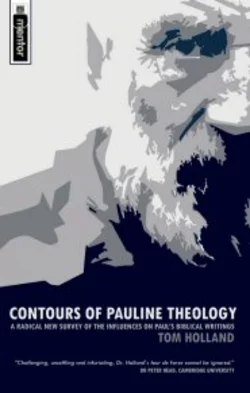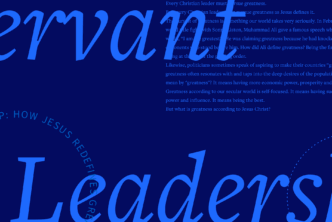This article was originally part of The Paul Page, a site dedicated to academic study of the apostle, with special focus on the work of N.T. Wright.

Tom Holland, Scotland, UK: Mentor, 2004, 392 pp.
Generally speaking, conservative Reformed criticisms of the new perspective on Paul strike me as lackluster and predictable. That cannot be said, however, of Tom Holland’s new book, which is bound to shake loose some long-standing presuppositions in Pauline studies.
The book is not without its weaknesses. Holland’s apparent anxiety about the contributions of liberal scholarship (a hallmark of conservative works) can be slightly distracting. One may also question whether Holland has adequately made his case that the literature of second-temple Judaism is too fragmentary to provide much insight into Pauline studies, while at the same time apparently presupposing that nothing stood culturally between the texts of ancient Israel and Paul’s understanding of those texts. The significance of intertestamental writings, many of us believe, is that they serve as reference points in recovering the way in which Jews of that time understood their Scriptures, and considering the fact that we know Paul only through a scattered collection of letters bearing his name, one could very well argue that understanding the apostle’s thought is actually more challenging than understanding the thought of other authors of the time, and quite frankly we can use all the help we can get.
Nevertheless, Holland argues his case well and with refreshing verve (his analogy on pp. 65 and 66 is particularly interesting). These methodological differences aside, Holland’s book raises enough questions about traditional assumptions to clear the way for groundbreaking research, and his approach does allow for a rigorous reexamination of the degree to which Paul is indebted to texts like Isaiah and the Pentateuch.
Holland’s central thesis is strong because it is so simply stated: That Paschal theology ties together early Christianity’s key doctrines. A survey of New Exodus themes provides an important framework for this thesis, and tightly weaves together Holland’s evangelical interpretation of the Pauline doctrines of atonement, justification, and christology. A particularly cogent articulation of his concern about N.T. Wright’s reliance on Maccabean martyrdom traditions as a key to understanding the atonement is found on page 180:
If it is true that Paul’s understanding of the death of Jesus is that he is the great example of the Jewish martyr, then it means that his death is of no more significance than the death of any innocent sufferer. … In other words, martyrdom theology is a surrender of the great evangelical doctrine of the unique substitutionary sufferings of Christ. Without realising what has been surrendered, evangelical scholars have abandoned the historical doctrine of the uniqueness of Christ’s atoning suffering and have replaced it with a doctrine that has no distinct Christian content. It fails to uphold the uniqueness of the sufferings of Jesus. This outcome is the result of embracing psuedepigraphal writings as the key to New Testament interpretation rather than taking seriously the statement of Paul that the redemption Christ has achieved was witnessed to by the Law and the Prophets.
I would argue that it is the resurrection that imbues Jesus’ death with unique significance—but then again, to be fair, I don’t believe in a penal substitutionary atonement either.
Holland’s alternative explanation for the hilasterion of Romans 3:25 hinges on the argument that the blood of the Passover lamb described in Exodus 12 was understood to have propitiatory value, an argument strengthened by Ezekiel 45:25 which describes the anticipated eschatological Passover as involving sin offerings.
When he turns his attention to the doctrine of justification and the new perspective on Paul, Holland quickly brushes aside Sanders’ articulation of covenantal nomism but dedicates considerable space to challenging Dunn’s and Wright’s portrayal of the pre-conversion Paul as one “zealous” for the law in the tradition of the Maccabean revolutionaries. For Holland, this is of particular significance because if Paul was not a Zealot then his initial persecution of the church was based not on nationalistic pride (brought to a head in issues like circumcision) but rather opposition to the proclamation of a crucified Messiah per se. On the other hand, while arguing that justification did indeed have a forensic dimension, Holland points out that it nevertheless cannot be read outside of a covenantal (hence corporate) framework. More on this below.
Finally, when turning his attention to the doctrine of christology, Holland dedicates considerable space to articulating his thesis that the description of Jesus as the “firstborn” in Colossians 1:15ff and elsewhere is to be understood in a Pascal, New Exodus context. As a result, he is able to argue that a high christology is implicit from the very beginning of Christian reflection, since “Only God himself [sic.] could be the firstborn/redeemer of the whole creation” (p. 269). Of the earliest Christians, Holland writes, “Their Christology was not ontologically based, although this was its inevitable conclusion, but functionally based. … New Testament Christology is clearly basically functional, and not only is Jesus seen to be fulfilling the Messianic promises, but into this fulfillment model are drawn statements that can mean nothing other than that Jesus is uniquely and ontologically identified with Yahweh” (ibid).
As the above-cited argument demonstrates, Holland is apparently able to stay firmly within the Reformed tradition even while proposing new categories of Pauline thought. He argues that proponents of the new perspective have misread the Reformers while simultaneously arguing that his own approach is fully compatible with their theology. Having said that, Holland’s thesis is likely to present a significant challenge to traditional Calvinists as well. His interpretation of key texts throughout 1 Corinthians and Romans involves the most vigorous argument for a corporate dimension of Pauline theology that I’ve seen. Those conservative Presbyterians who are struggling to reconcile the current state of Pauline studies with traditional Reformed confessionalism may find this book of considerable value. But there’s enough here to challenge everyone, regardless of their confessional background. As Dr. Peter Head of Cambridge has written in a pre-publication review, “Challenging, unsettling and infuriating, Dr. Holland’s tour de force cannot be ignored.” I agree. This book is a valuable contribution to the ongoing debate in Pauline studies and deserves serious consideration far and wide.





